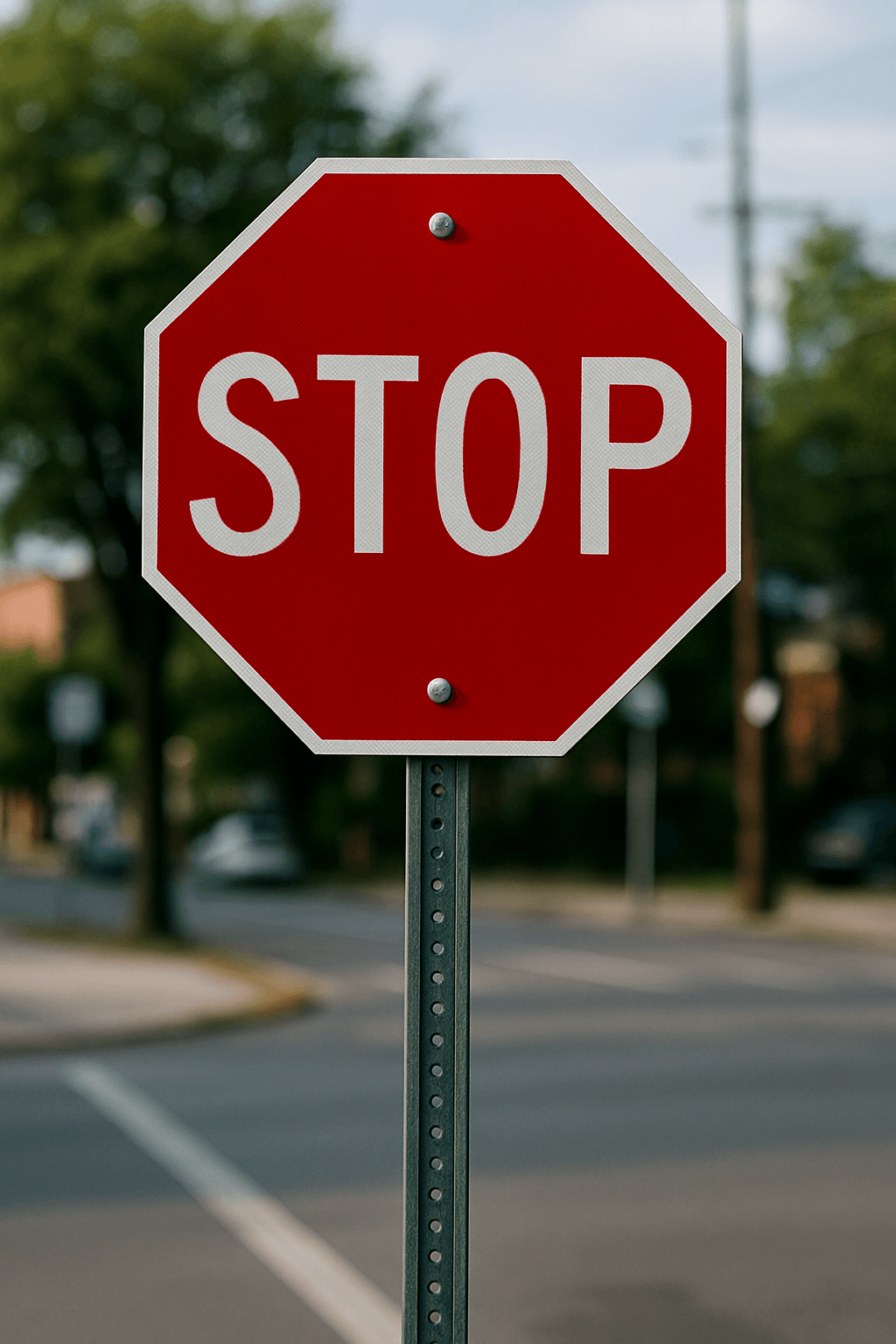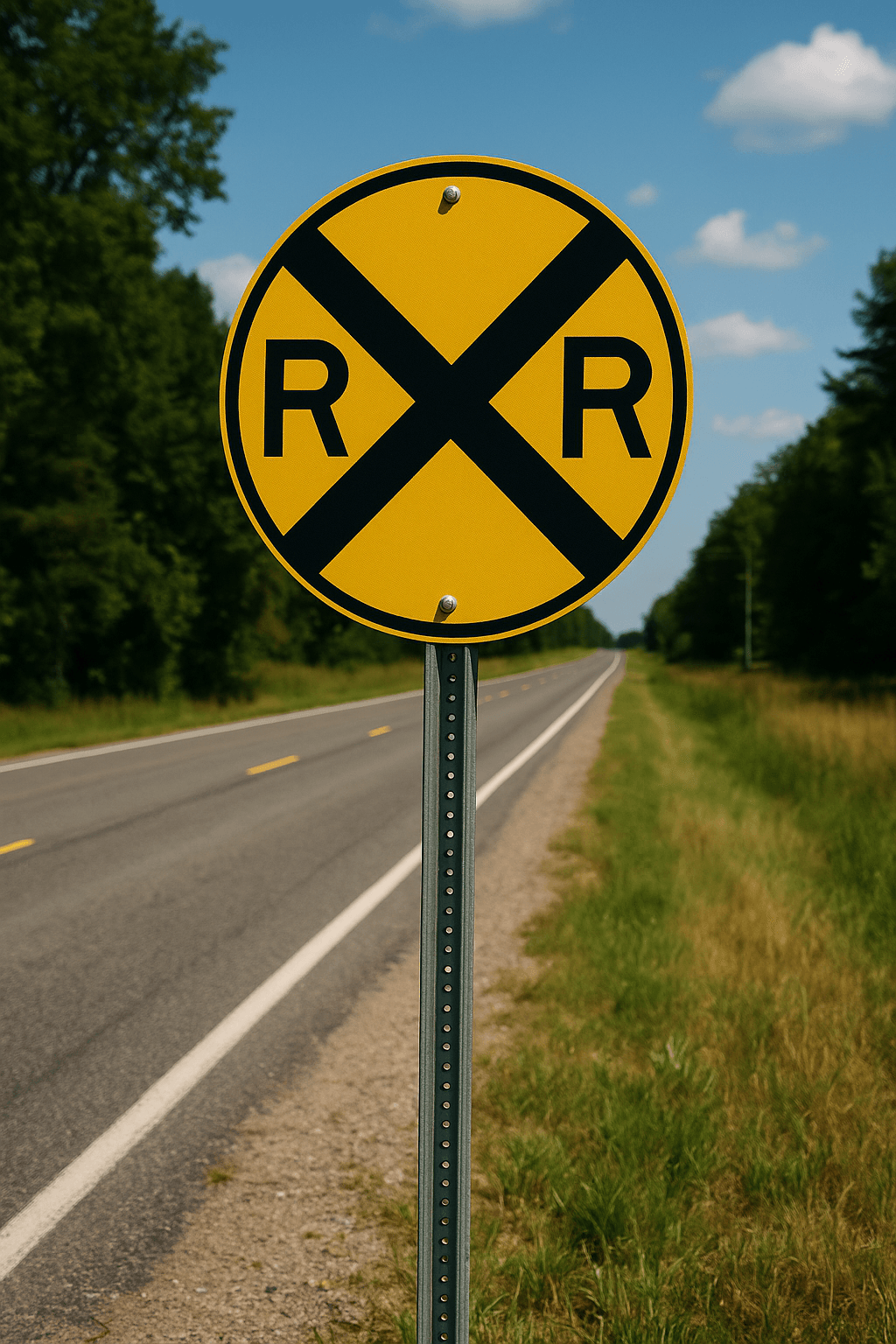Stop Sign: Meaning, Shape, Color, and How to Handle It on the Test
Your Complete Guide to the U.S. Stop Sign for the DMV Written Test

If there’s one road sign every driver in the United States must understand without hesitation, it’s the stop sign. It’s simple on the surface but surprisingly easy to mess up on the test if you only memorize and don’t actually get how it works in real situations. This page breaks it down in a way that helps you pass faster and feel confident behind the wheel.
A Quick Look at the Stop Sign’s History
The stop sign didn’t always look the way you see it today. In the early 1900s, states used all kinds of colors and shapes. Some were yellow, some were square, and some were barely visible at night. In 1923, engineers realized drivers needed a sign that looked instantly important, even from a distance. That’s where the octagon shape came from. The eight sides made it unique, something you could recognize even if headlights were dim or the paint was fading.
Red came a little later, once fade resistant paint became available. By the 1950s, the red octagon became the national standard and eventually a worldwide symbol. Today, you could drop a stop sign almost anywhere on earth and most drivers would know exactly what to do.
What the Stop Sign Means on the Road
A stop sign means you must come to a complete stop. Not a rolling stop. Not a “slow enough” stop. A full, wheels not moving stop. On the test, questions often try to trick you with words like “slow down” or “prepare to stop.” Don’t fall for that. You must stop all the way.
You need to stop at the first place where traffic expects you to:
- The stop line
- The crosswalk
- The edge of the intersection
Whichever appears first is where you stop. Many people lose points on the driving test because they stop past the line. In real traffic, that’s where pedestrians get frustrated fast.
When You Can Move After Stopping
After you stop, you must yield to:
- Pedestrians already crossing
- Bicyclists moving through the intersection
- Any vehicle with the right of way
This is the part the exam loves testing. A stop sign doesn’t give you automatic priority. Even if you stopped first, you still move only when the path is actually clear and safe.
If you and another car stop at the same time, the general rule is that the driver on the right goes first. If one of the cars is turning left, the left turning driver usually waits. These rules show up often in DMV questions, so if you remember them now, you won’t freeze up later.
Why the Stop Sign Matters for the Exam
The stop sign appears in almost every state’s practice test because it represents way more than a red octagon. It checks whether you understand right of way, pedestrian safety, and basic decision making. If the exam writers want to see how careful you are, this is the sign they use.
But here’s the good news. Once you see the patterns behind how stop signs work, the questions become easy. The sign is designed to protect the most vulnerable road users. If something or someone could be in danger, you wait. That simple habit helps you answer test questions correctly and makes you a safer driver in real life.
How to Spot the Stop Sign Fast
The octagon shape is the only one of its kind on U.S. roads. Even if the sign is turned sideways or half blocked by a tree, you can still see those eight edges. This is the exact reason engineers chose this shape. When the exam shows an odd angle or partially hidden sign, they want you to recognize the silhouette, not guess based on color alone.
Final Tip for Your Test
Whenever the exam asks what to do at a stop sign the safest answer almost always includes two things:
- Come to a complete stop
- Yield to anyone with the right of way
If you keep that in your head, you’ll get almost every stop sign question right without memorizing pages of rules.
Other U.S. Road Signs
© 2025 Drivio DMV Practice Tests
